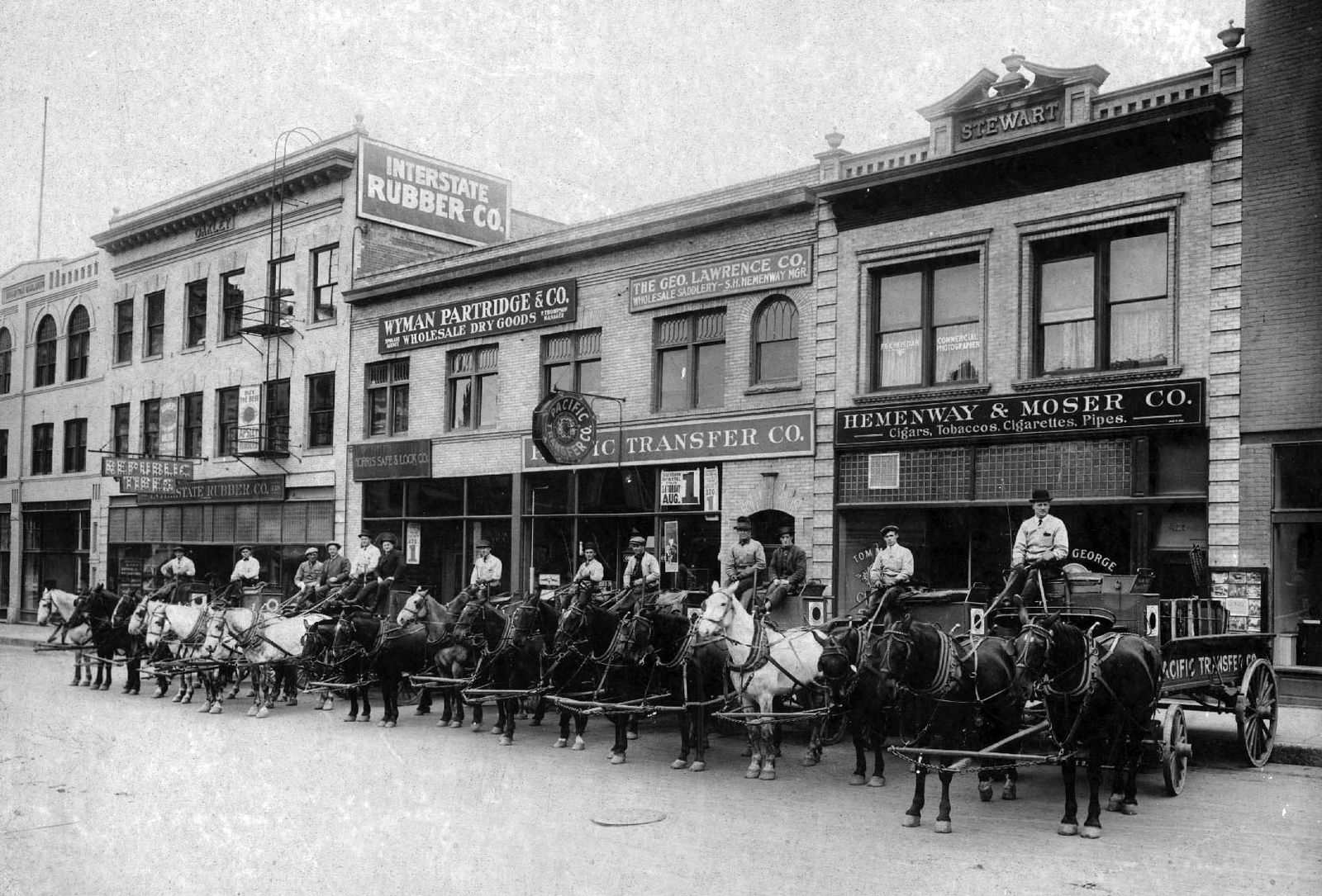
Pacific Transfer, W. 400 block of First Ave.
The Northern Pacific Railroad arrived in Spokane in 1881. It was a milestone that started Spokane's meteoric rise to eclipse Walla Walla as the commercial center of the inland region. John Bigham, born in New York in 1835, was in the right place to expand with the growing city. After living, farming and running businesses in New York, Illinois, Minnesota and North Dakota, his new business, Pacific Transfer Co., became the baggage handler for the Northern Pacific, whose tracks ran between First and Second Ave. through downtown Spokane.
Section:Then & Now
Jesse Tinsley
| The Spokesman-Review
The Northern Pacific Railroad arrived in Spokane in 1881. It was a milestone that started Spokane's meteoric rise to eclipse Walla Walla as the commercial center of the inland region. John Bigham, born in New York in 1835, was in the right place to expand with the growing city. After living, farming and running businesses in New York, Illinois, Minnesota and North Dakota, his new business, Pacific Transfer Co., became the baggage handler for the Northern Pacific, whose tracks ran between First and Second Ave. through downtown Spokane. Bigham started with three horses, but within a few years had more than 20 horses and several "drays", wagons for hauling freight. Bigham died in 1892, but partner J.M. Watkins, born 1858, took over and quickly earned the nickname, "Baggage Jim." Working with horses had its dangers. In September of 1903, a Pacific Transfer team started and dashed through the streets, colliding with a pile of bricks and barrels on Mill St., which is now Wall St. The Spokane Chronicle noted the only damage was a broken sack of flour, a torn harness, a demolished hack and a scared driver. In 1920, the Teamsters of Spokane asked the Central Labor Council to endorse their demand for a wage increase. Watkins declared, "As far as I know, the employers of these men feel that the present pay, $4.35 for an eight-hour day, is a fair renumeration." By the 1930s, the company had 14 people operating 20 gas-powered trucks and Watkins had sold out to his son-in-law Walter Petty. The business didn’t survive the Great Depression. “Baggage Jim” died in 1944. Watkins’ grand-daughter, Mary Lou Petty, born 1915, became famous as a competitive swimmer. She held several American records and went to the 1936 Berlin Olympics, finishing just seconds out of the medal round. Between races, she watched Jesse Owens win the 100-meter dash.

